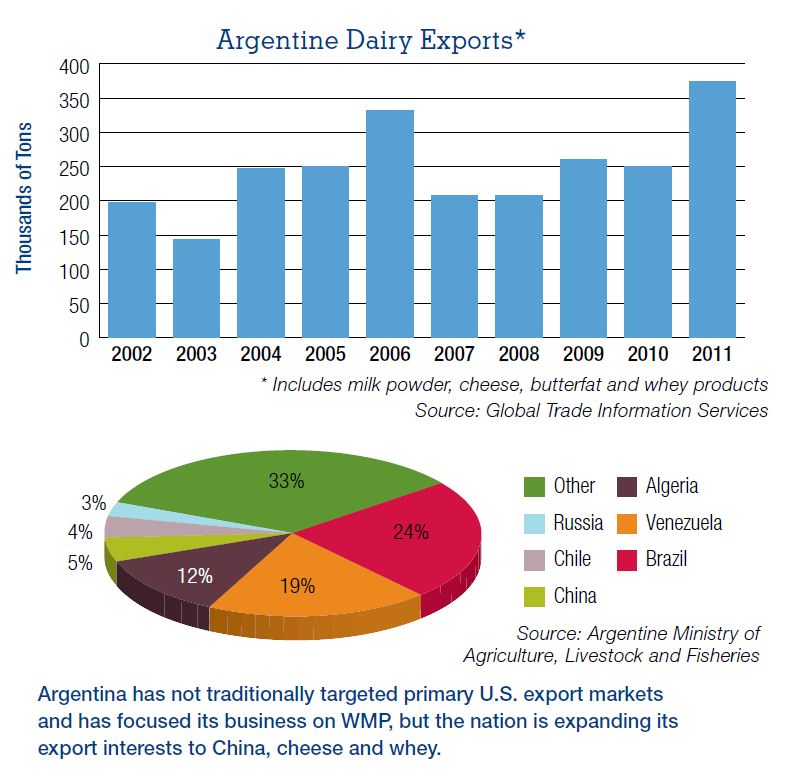



Argentina Looks to Export Markets for Dairy Products
Argentina’s dairy farmers annually deliver about 30 per cent more milk than required to meet domestic demand. Its processing sector has had moderate success in export markets.Yet a combination of factors including restrictive government
policies, weather dependence, competition for
resources from other ag sectors like beef, sheep and
soybeans, and healthy growth in domestic consumption—
limited dairy industry growth and kept the nation
off most prognosticators’ lists of up-and-coming
exporters - until now.
Argentina’s dairy performance over the past year-plus,
shifts in government policies and an influx of investment
suggest the nation may be more of an export force in
the years ahead than many imagined.
Farm conditions—everything from weather to farmgate
milk prices to milk profitability vs. other ag sectors—were
ideal, driving milk output 13 per cent to nearly 12 million
tons last year, according to statistics from Argentina’s
Ministry of Agriculture, Livestock and Fisheries.

It was
the fourth straight year of rising output. In the first five
months of 2012, production grew more than nine per cent.
At the same time, the government eased dairy export
restrictions that were implemented mid decade to keep
a lid on domestic retail dairy prices.
Argentine exporters also benefit from market access
provisions in the country’s existing regional trade agreements,
such as Mercosur and Unasur.
The government reported Argentine dairy export
volume rose 39 per cent to 440,083 tons in 2011, led by
milk powder (mostly WMP, up 54 per cent to just under
200,000 tons). Cheese (+33 per cent) and whey and its
derivatives (+55 per cent) also showed healthy gains.
Looking ahead
Some of the nation’s largest dairy processors appear
to think more good days are to come. La Serenissima,
NAM Corp., SanCor and others have recently made or
announced major investments, largely geared toward
expanding drying capacity for milk and whey.
The country is also looking to broaden its customer
base beyond Algeria and Latin America. Recently, the
Dairy Industry Center, for example, took a group of
cheese producers to China to lay the groundwork to
increase cheese exports.
“The factors often cited as limiting milk production and
dairy export growth proved inconsequential over the
past year or two,” says Sonia Amadeo, USDEC’s South
American office representative.
“But whether Argentina
can maintain its dairy industry growth is unknown.”
Industry constraints have subsided but not disappeared.
Farmgate prices that are declining around the
world will likely catch up to Argentine producers. Other
ag crops could cycle back to the top of the profitability
heap.
Plus, the Argentine government is infamous for keeping
a tight rein on trade and could re-implement dairy
export restrictions at any time. To top it off, the nation’s
top dairy buyer, Brazil, is keen on limiting Argentine
dairy flows to protect its own domestic industry.
Ms Amadeo says: “The question is whether the country
can sustain growth, keep investing in capacity and
prevent backsliding if conditions deteriorate.”


